Star Hopping
Assuming you’ve been blindfolded, spun around, and dropped in the middle of a forest, how would you find your way out? You’d probably look for landmarks, like a river or a mountain, and then use those landmarks to find your way out. This is the same idea behind star hopping. You use bright stars and constellations as landmarks to find your way around the night sky.
Hand Measurements
Nature has provided us with a rudimentary angle measurer: our hands. If you hold your hand out at arm’s length, you can measure the distance between any two points in the night sky. Then, the width of your:
- Little finger is about 1 degree
- First three fingers packed together is about 5 degrees
- Fist is about 10 degrees
- Outstretched index to little finger in a ‘YO’ hand position is about 15 degrees
- Outstretched thumb to little finger in a ‘Call Me’ hand position is about 25 degrees
This is a very rough estimate, but it’s good enough to get you started. The following illustration explains this in more detail (Credits: TimeAndData):
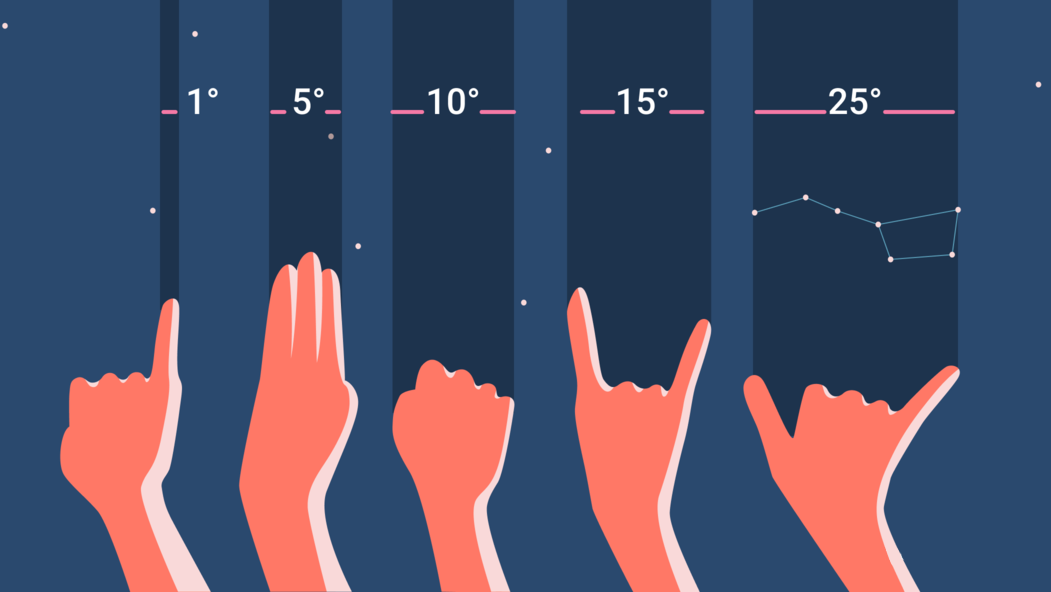
Polaris
Assuming you know the latitude you’re at, you can use Polaris to find your way around the night sky. Polaris is the brightest star in the constellation of Ursa Minor, and it is located almost directly over the North Celestial Pole. This means that if you’re in the Northern Hemisphere, you can use Polaris to find North.
Royal Family
The royal family consists of King Cepheus, his wife, Cassiopeia, their daughter, Andromeda and her husband, Perseus.
Cassiopeia is quite easily recognizable in the night sky. It is a constellation that looks like a ‘W’ or an ‘M’ depending on the time of the year. It is visible all year round in the Northern Hemisphere. The angular bisector of the ‘W’ points to the North Celestial Pole, where you can find Polaris.
Extending the first two stars of Cassiopeia, we arrive at Alderamin, the \(\alpha\) star of Cepheus, the king. The constellation of Cepheus is a faint constellation and can be recognized by the house-like shape it forms using a triangle and square as building blocks.
Coming back to Cassiopeia, taking the angular bisector of the angle formed at the second star and moving along it, away from Polaris, we arrive at the galaxy of Andromeda (Messier 31). It is the farthest object visible to the naked eye, and it is the closest galaxy to our own Milky Way. The constellation of Andromeda is a near-flat ‘V’ shaped constellation, and it is visible all year round in the Northern Hemisphere. The Andromeda galaxy lies along the angular bisector of the angle formed by the three most prominent stars of the constellation of Andromeda.
Extending the line formed by joining Alpheratz and Mirach, the two stars at the top of the ‘V’ of Andromeda, we arrive at the star Algol in the constellation of Perseus, the hero. Also, on extending a line from Kechab, the \(\beta\) star of Ursa Minor and Polaris, we arrive at the star Mirfak in the constellation of Perseus. Perseus has a signature ‘Y’ or ‘\(\lambda\)’ shape, depending on how you look at it.
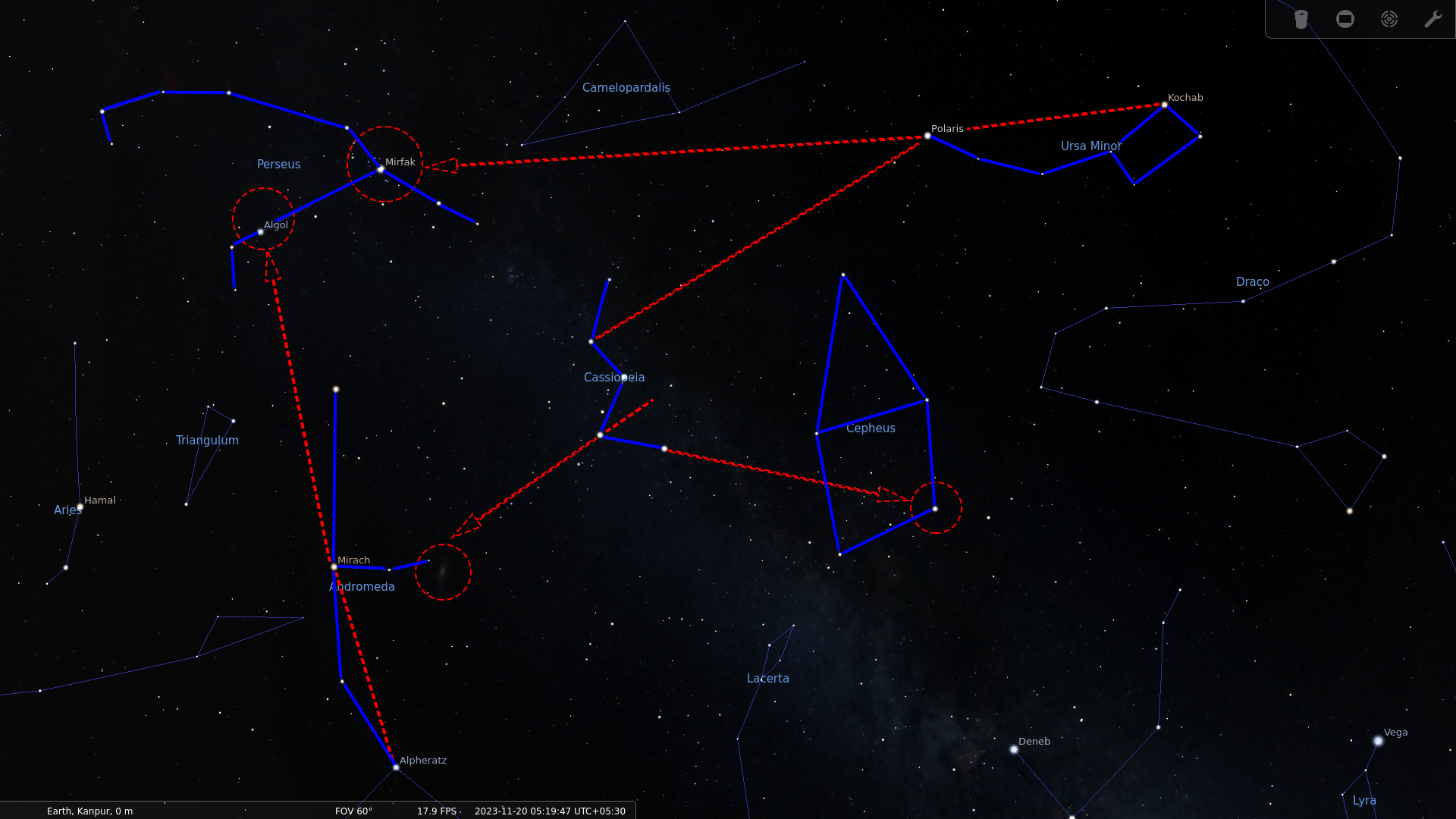
Big Dipper
The Big Dipper is a very prominent asterism in the night sky. It is part of the constellation of Ursa Major, and it is visible almost all year round in the Northern Hemisphere. It is a great starting point for star hopping as it is easily locatable and lies near the North Celestial Pole (NCP).
Extending a straight line joining \(\alpha\) and \(\beta\) Ursa Major, we find the star Polaris.
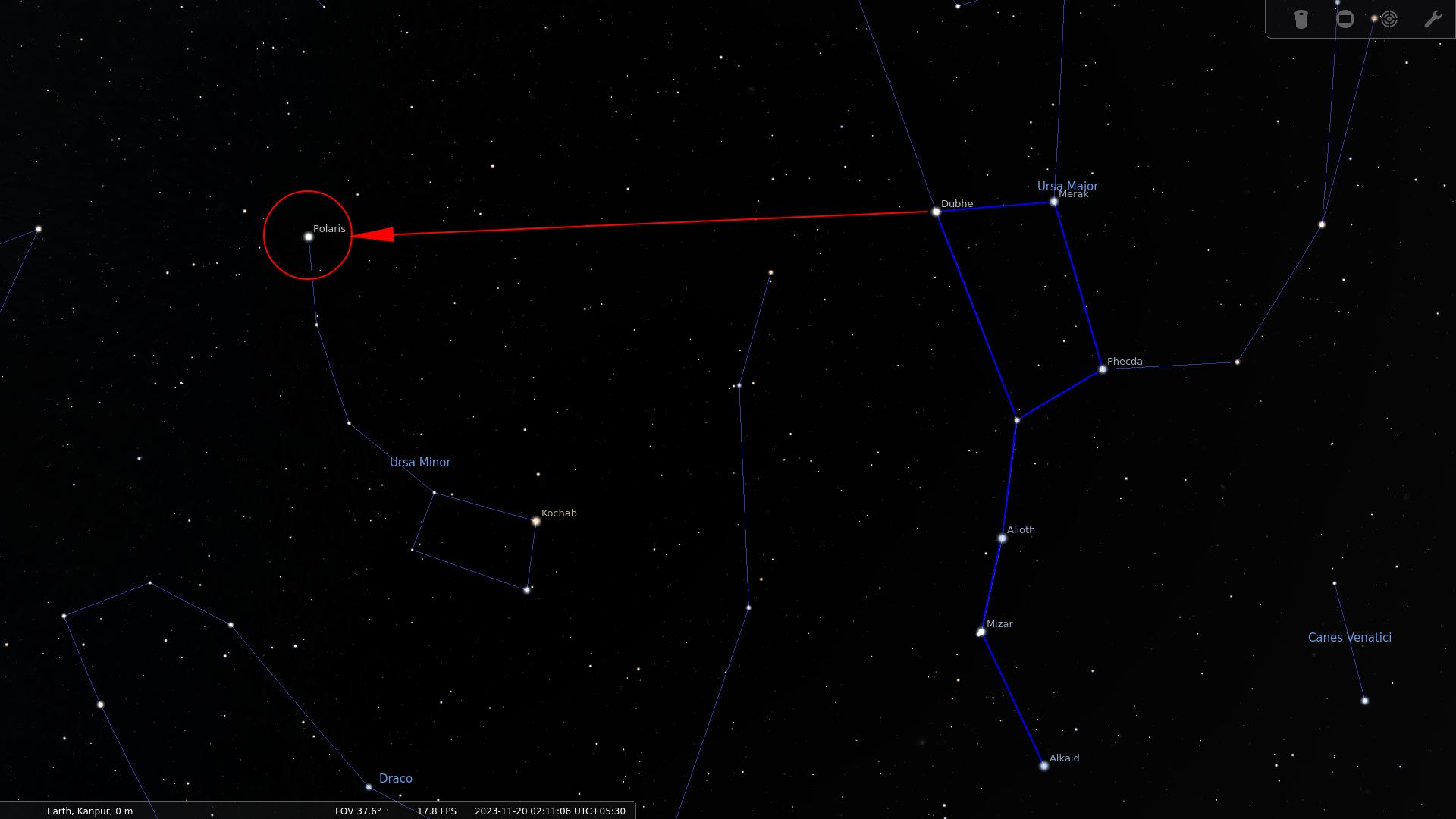
Extending the stars on the tail in the arc, we come to Arcturus of Bootes, the Herdsman. Extending this arc in a straight line, we reach the star Spica of Virgo, the Virgin, which is the second largest in the night sky.
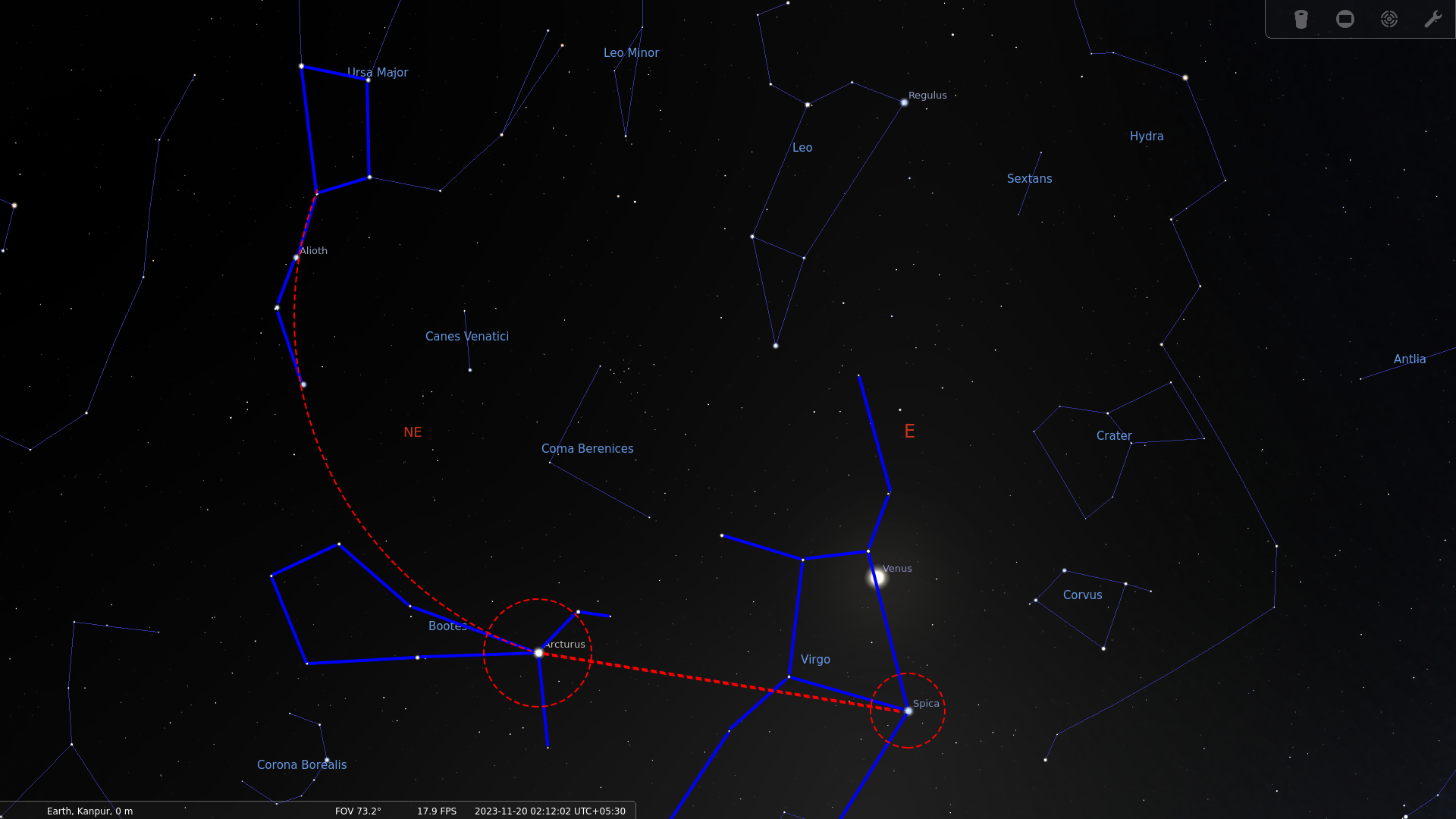
The Big Dipper also points to other important stars. You can follow the two stars across the top of the cup and they lead you to the northernmost bright star, Capella, in the constellation Auriga. If, instead of going up from the front of the cup, you go down from the back of the cup, you end up at the star Regulus in the constellation Leo. And if you go across the cup, from the back top to the bottom front, you end up at Castor in Gemini. You can continue that line on until you get to Betelgeuse in Orion, the brilliant red star in the west.
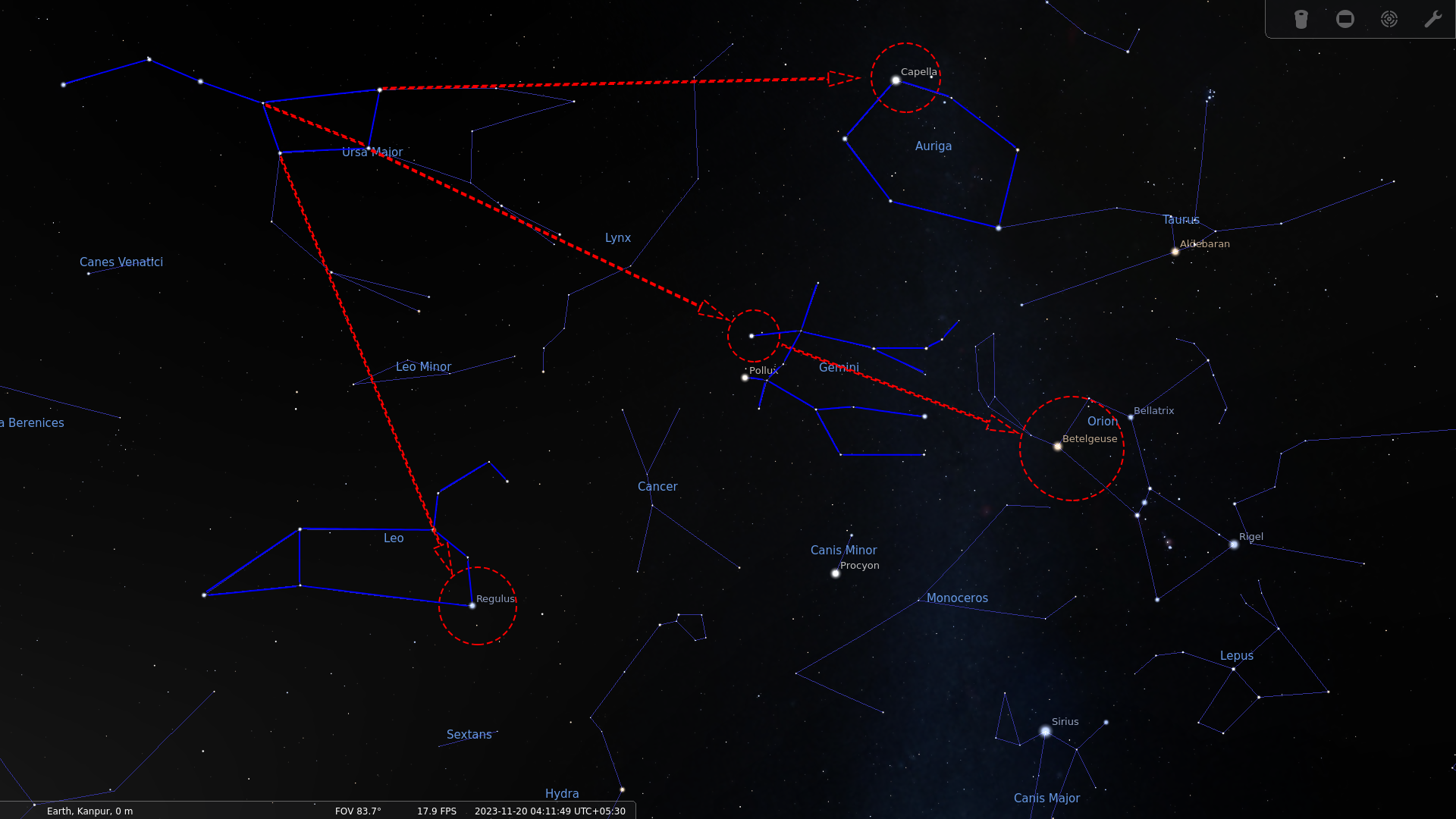
Orion
Coming to the possibly one of the most recognizable constellation in the night sky, Orion, we can use it to find other stars and constellations.
The three stars of Orion’s belt point to the bright orange star Aldebaran in Taurus, the Bull by extending the line 22 degrees in the north-west direction.
Extending the line further by around 14 degrees, we reach the Pleiades (Messier 45), a beautiful cluster of stars in Taurus.
The three stars of Orion’s belt also point to Sirius, the brightest star in the night sky, in Canis Major, the Great Dog, around 20 degrees south-east of the belt.
The three stars, Sirius, Betelgeuse and Procyon (in the constellation of Canis Minor, the Lesser Dog), form an asterism known as the Winter Triangle, which is almost equilateral.

Although we’ve tried to cover the majority of star hopping concepts, if you still want to know even more about star hopping, check out this playlist on YouTube.